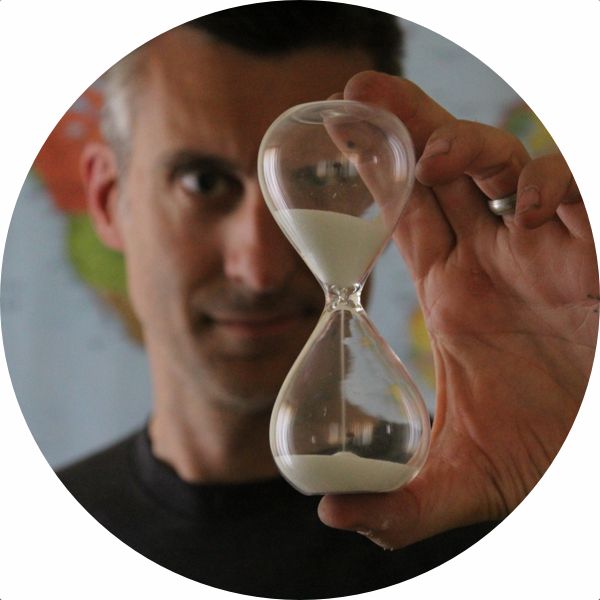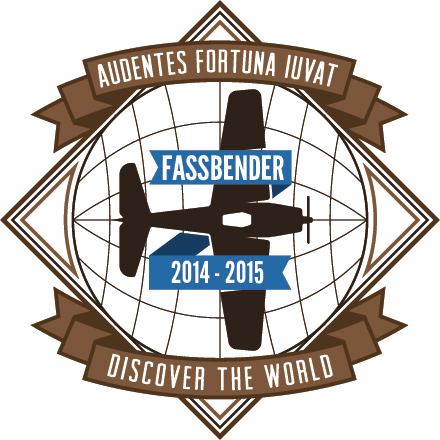Wednesday, 03-09-2014. Day 15.
Puppy Attacks and Bird-Men.
It's really hard to see everything there is to see on Easter Island in one day. If you were motivated, planned well, and moved fast, you could do it, but we think it would be much more enjoyable to take your time when visiting the moai. They're really quite awe inspiring and deserve some of your time.
Driving on Easter Island
The cabaña had a few cars they rented out, and we got lucky that one was available that morning. Otherwise we would have walked into town and gotten one from the rental place (side note: the owner of the rental place has the biggest, most luxurious house on the island). So we rented a Suzuki Jimny (we took to calling it Jimmy) for $80. That helped us to visit some of the moai we hadn't seen the day before. Jimmy had a couple of dents in the hood, and Sonia, our host, pointed at these and said, “Watch out for the horses.”
Tahai
We were heading to the museum, but we turned one street to early, so we decided to visit Tahai, the only moai on the island with eyes (although they are replicas) first. Adjacent to Tahai, there was another ahu with four moai, and nearby, a replica hare paenga, an aboriginal Rapa Nui dwelling. It's pretty small and cramped inside, but the people didn't do much more than sleep inside.
Rapa Nui Museum
Then we visited the museum, which is really fascinating and a bargain at 1,000 pesos per adult (kids were free). It's small, but packed with information about the formation of the island, the Rapa Nui people, and both the moai culture and the so-called bird-man cult (more on this later). We made it through the exhibits in about an hour, and it helped to firm up some of the details Tiare had told us the day before.
We stopped in a small grocery store to pick up supplies for lunch, The selection was pretty limited and some of the cans were rusting on the shelves, but we made do with some deli meat, some chips, some water, some canned salmon, and an avocado. We had bread from that morning's delivered breakfast, so, after a stop at the vegetable stand near our hotel, we went back to the room and made sandwiches. All in, our lunch ran us $36. Nothing is cheap on the island (except maybe the museum admission).
Rano Kau
We still had a few sights to see, so we drove over to Rano Kau, another of the crater lakes on the island. This one was a lot deeper than the one at Rono Raraku we’d visited the day before. We'd learned in the museum that this was the second volcano to erupt that helped form the island. The first was Poike on the other end of the island, and the third and largest was Terevaka, which dominates the northern side of the island (we didn't visit either of the last two).
Orongo
The road continued past Rano Kau, so we got back into Jimmy and drove until we ran out of road at Orongo (you need to show your tickets here, too; remember they're good for five days). This is the place where the bird-man cult lived. This culture developed at the end of the moai era, or possibly alongside it.
You hear a lot about the giant heads on Easter Island all the time, but not so much with the bird-man cult, which was at least as fascinating. First off, I'm not sure why it's considered a cult, other than it was strange to the archaeologists who first discovered and excavated the site. And yeah, it was a little weird, but not any weirder than destroying your entire environment to build giant stone heads.
The bird-man cult, who worshiped Make-Make, their god of creation, had an annual ritual competition to see who could gather the egg of the Sooty tern from Moto Nui, a smaller island just off Easter Island. The winner of the competition was known as the Tangata-Manu, was considered sacred, and spent the next year in seclusion.
Ahu Akivi
On the way to Ahu Akivi, a group of moai who face outward toward the sea, we were attacked by a pair of friendly puppies. At one point we couldn't drive forward because the two puppies were under the car and I didn't want to risk running them over. We managed to escape by edging forward slowly, making sure the little pups were clear of the tires.
We really liked the set of moai at Ahu Akivi We can't explain why, exactly, but this group felt a little more austere. Maybe it was that they looked at the ocean, or maybe it was that they were a little further inland than many of the other moai. But whatever the reason, these are definitely worth seeing.
Also worth noting, the vendors here had some of the best crafted jewelry and replica statues we'd seen so far. If we weren't traveling around the world, I think we would have bought a few.
As we left back down the road, the puppies once again attacked, running behind Jimmy, barking and whining as we drove along. They were really cute.
We headed back to the hotel. The gals wanted a little downtime, and I went for a run to take a look at Puna Pau, where the red scoria that was used for the pukao was quarried, then we went back to town to have dinner a Haka Honu, a restaurant Tiere recommended. It was pretty good, but pricey — my hamburger cost $22.
Samantha and I enjoyed our first (and only, as it turned out), pisco sours, which is the national cocktail of Chile. Pisco is a type of brandy, and the pisco sour combines pisco with lime juice, simple syrup, and egg whites.
We toasted the sunset with a little sadness — our time at Easter Island was nearly over.
Notable Statistics
Tourists taking iPad pictures: 1
Kilometers traveled: 30 (approximately)
Gasoline used: 1/4 tank
Cost to refill gasoline: $16
National drinks consumed: 2

Tom Fassbender is a writer of things with a strong adventurous streak. He also drinks coffee.
















